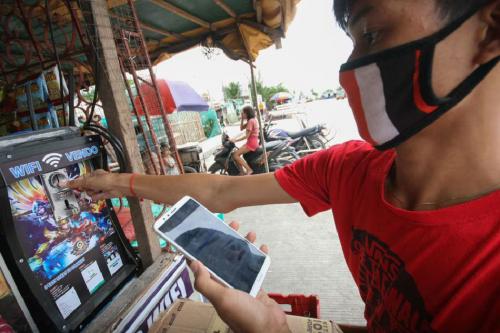
The Department of Information and Communications Technology hopes to complete this year Phases 2 and 3 of the National Fiber Backbone Project, which is seen to increase faster, more reliable, and more secure internet service to various provinces, government offices and data centers in the country.
DICT spokesperson Renato Paraiso said Thursday they hope to begin the implementation of the second and third phases by March or April.
The agency has completed Phase 1 of the project, which covers 1,245 kilometers of technical infrastructure from Laoag, Ilocos Norte to the DICT offices in Quezon City.
Phase 2 and 3 will extend the National Fiber Backbone to southern Luzon and parts of Visayas and Mindanao.
The backbone is where submarine cables from abroad connect and provide spectrum for use by the Philippines.
“Plano sana namin sa DICT makumpleto ang connectivity natin from the farthest north to the last province in the south. Dito kokonekta ang middle and last mile south para makapaghatid tayo ng mga serbisyo sa mga lokal na pamahalaan at para makapag-provide tayo ng connectivity sa tinatawag nating Geographically Isolated and Disadvantaged Areas,” he said.
(We plan to complete connectivity from the farthest north to the last province in the south. This is where the middle and last-mile south can connect to provide connectivity to local governments and to Geographically Isolated and Disadvantaged Areas)
The World Bank in April 2024 noted that although broadband connectivity in the Philippines had increased between 2019 and 2022, "the access gap in broadband internet between the rich and the poor in the Philippines has been rapidly expanding, making digital opportunities out of reach for many."
Poor internet infrastructure, it said, would prevent learners from gaining online skills that would prepare them for future employment and would also means "poor technology adoption and limited innovation and productivity growth by firms, especially the micro, small, and medium enterprises (MSMEs)."
Paraiso said that the Philippines has secured a $288-million loan from the World Bank for the completion of the 4th and 5th Phases of the project.
“And finally Phase 6, para naman matie-up lahat ng connectivity natin, para makumpleto ang Regions 1, 3, 4-B, and-lalong lalo na ang BARMM,” he said.
(Finally, Phase 6, will tie-up the connectivity and complete the Ilocos Region, Central Luzon, Mimaropa, and especially the Bangsamoro Autonomous Region in Muslim Mindanao)